












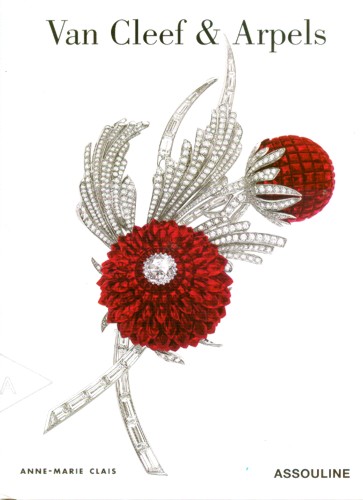
"Discovering Van Cleef & Arpels" by Anne-Marie Clais.
NOTE: We have 75,000 books in our library, almost 10,000 different titles. Odds are we have other copies of this same title in varying conditions, some less expensive, some better condition. We might also have different editions as well (some paperback, some hardcover, oftentimes international editions). If you don’t see what you want, please contact us and ask. We’re happy to send you a summary of the differing conditions and prices we may have for the same title.
DESCRIPTION: Hardcover with dustjacket in slipcase. Publisher: Assouline Publishing (2009). Pages: 104. 8¾ x 6½ x 1 inch; 1 pound.
CONDITION: NEW. New hardcover with dustjacket in slipcase. Assouline Publishing (2009) 104 pages. Unblemished and pristine in every respect. Pages are clean, crisp, unmarked, unmutilated, tightly bound, unambiguously unread. Satisfaction unconditionally guaranteed. In stock, ready to ship. No disappointments, no excuses. PROMPT SHIPPING! HEAVILY PADDED, DAMAGE-FREE PACKAGING! Meticulous and accurate descriptions! Selling rare and out-of-print ancient history books on-line since 1997. We accept returns for any reason within 14 days! #8681a.
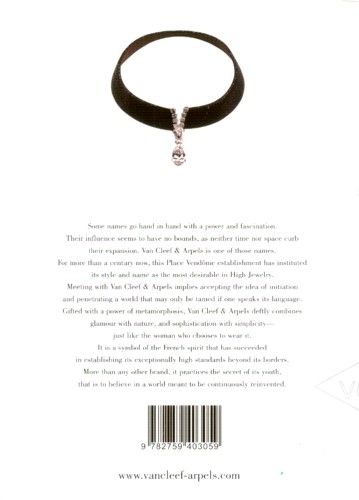
PLEASE SEE DESCRIPTIONS AND IMAGES BELOW FOR DETAILED REVIEWS AND FOR PAGES OF PICTURES FROM INSIDE OF BOOK.
PLEASE SEE PUBLISHER, PROFESSIONAL, AND READER REVIEWS BELOW.
PUBLISHER REVIEWS:
REVIEW: Some names go hand in hand with a power and fascination. Their influence seems to have no bounds, as neither time nor space curb their expansion. Van Cleef & Arpels is one of those names. For more than a century now, this Place Vendome establishment has instituted its style and name as the most desirable in High Jewelry...Gifted with a power of metamorphosis, Van Cleef & Arpels deftly combines glamour with nature, and sophistication with simplicity -- just like the woman who chooses to wear it. It is a symbol of French spirit that has succeeded in establishing its high standard beyond its borders. More than any other brand, it practices the secret of its youth, that is to believe in a world meant to be continuously reinvented.

REVIEW: Chapter Titles:
Memory.
An Imaginative World.
Style.
Nature.
Sophistication.
Femininity.
Metamorphosis.
Glamour.
Unity.
Simplicity.
Includes "Milestones" which consist of "The History of a Great Name" and "The History of a Style."
43 illustrations within the text are explained and credited on six pages.
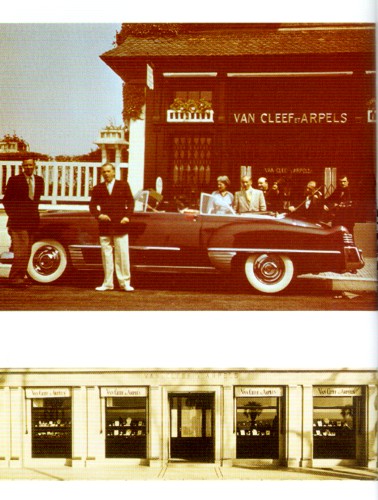
REVIEW: Anne-Marie Clais is a graduate of Ecole Normale Suprieure and Ecole Suprieure des Sciences Economiques et Commerciales. After working with the haute couture house Givenchy, she founded a consulting company working as a luxury brand consultant. Her firm also produces documentary films. She writes articles and essays, and is co-author of “Sylvie Kleiman-Lafon of Les Anges de late Cote, published by Pauvert in 2001.
PROFESSIONAL REVIEWS:
REVIEW: An inspiring collection of Van Cleef & Arpel designed jewelry. Exquisite photography. Illuminating descriptions. Recommended.
READER REVIEWS:
REVIEW: Nice little book. The photos are gorgeous.
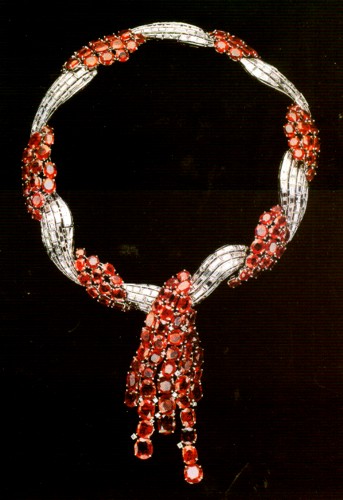
ADDITIONAL BACKGROUND:
VINTAGE JEWELRY: How vintage jewelry brings old-time glamour to the red carpet. Among all the gemstones paraded on the red carpets of Cannes, Venice, Hollywood and New York, some pieces leave an indelible impression. At this year’s Manus X Machina-themed Met Gala, the award for best supporting accessory went to a majestic diamond peacock, its tail curving over one strap of Uma Thurman’s custom-made Ralph Lauren ivory gown. Created as a special order by Cartier in 1948 and comprising 83.89ct of diamonds, the brooch demonstrated the power of vintage when it comes to making a statement on the red carpet.
"Vintage jewelry brings character and a sense of nostalgia to a look," says LA-based British stylist Tanya Gill, who dresses stars such as Kate Winslet, Julie Christie and Jane Fonda. "I love the craftsmanship, the history and the patina. Sometimes I’ll build characters through the jewelry as though I am creating a look for a film."
Gill was responsible for the eye-catching vintage Bulgari bib necklace that Minnie Driver wore to the Vanity Fair Oscars party in 2014. Made in 1965, the necklace caught Gill’s eye at Bulgari’s Decades of Glamour pre-Oscar event. "It struck me as so exquisite in design and colour, with the craftsmanship of the turquoise, cabochon emeralds, cabochon amethysts and diamonds, that it would be a unique statement for the right personality," she says. "It was perfect for the statuesque beauty of Minnie Driver." 
It’s not only Hollywood’s grandes dames who carry off vintage glamour. At the Met Gala, Anna Wintour’s 29-year-old daughter, Bee Shaffer, was every inch the ingénue in 19th-century diamond chandelier earrings and a slim diamond headband by the New York-based vintage-jewelry specialist Fred Leighton, while at the reopening of Cartier’s Fifth Avenue mansion in September, Sienna Miller accessorised a fresh, floaty Valentino dress with a suite of diamond and emerald Cartier jewels from the 1920s.
The trend for vintage jewelry on the red carpet was kick-started in 1996, when Prada borrowed a 19th-century opal choker from Fred Leighton for a then-29-year-old Nicole Kidman. "It was a wonderful moment for us," recalls Rebecca Selva, Fred Leighton’s chief creative officer and public relations director. "It commanded tremendous attention because it was so different."
The collaboration sparked a long-term relationship with Kidman and began two decades of "beautiful and iconic moments" for Fred Leighton. Selva cites Charlize Theron’s appearance at the Vanity Fair Oscars party in 2000 as one of her favorites: clasped to the 25-year-old’s tangerine Vera Wang dress were two art-deco diamond clips. "Vera fell in love with the clips and then created the dress around them," says Selva. "The whole image was beautiful; it was Hollywood glamour in the most sophisticated and refined way."
Nowadays, as celebrity outfits are dissected on social media in real time, red-carpet appearances have even more effect on what used to be a very private, elitist market. "The internet has been great in spreading the message about vintage jewelry," says Selva. "There’s so much to discover – people realise it’s not what they thought it was. It’s not your grandmother’s jewelry, and nothing is so rarefied that it can’t be worn. Even our tiaras can be worn as headbands."

For Selva, increased visibility helps to dispel the myth that antique jewelry is outdated. "We have an unbelievable 19th-century diamond snake necklace that looks like the coolest piece anyone could wear, yet it’s almost 120 years old," she says. "It’s waiting for its red carpet moment."
Vintage jewelry’s reputation in the fashion world has been elevated further by Fred Leighton’s collaboration with Net-a-Porter, which began in 2014. Both antique jewels and new pieces from the Fred Leighton Collection (which are inspired by vintage designs) are available online, with prices ranging from £1,500 for a simple pair of drop earrings to tens of thousands for signed vintage pieces by the likes of Cartier, David Webb or Buccellati.
"We’ve had a really positive response, with jewelry often selling out within minutes," says Sophie Quy, fine-jewelry buyer at Net-a-Porter, who travels to the Fred Leighton store in New York up to four times a year to look for pieces. Diamonds, pearls and turquoise are bestsellers, along with chunky gold chain bracelets that customers wear stacked with modern designs. The site also works with Fred Leighton to source vintage pieces on demand.
Antique jewelry has also found a place in uber-fashionable department store Dover Street Market, which carries a selection of vintage rings and Victorian and Georgian tiaras by British jeweler Bentley & Skinner alongside its roster of modern brands. This departure from the notion of dusty vintage emporiums reflects an increasing desire to own something one-of-a-kind. "Vintage jewelry is much more interesting than anything you can buy now," says Max Michelson of the London vintage specialist SJ Phillips. "Instead of being tied to this year’s range, we have 400 years’ worth of ranges, so you’ll always find something that fits."
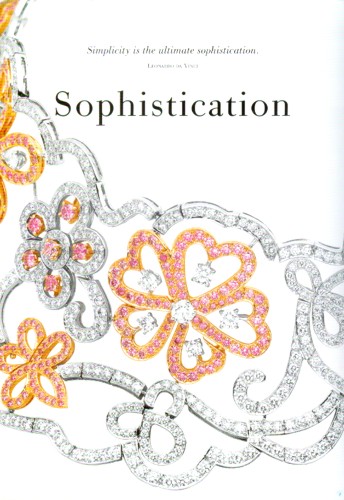
He says 20th-century pieces are far and away the most popular. "Everyone wants art deco because it’s stylish and nicely made, and being set in platinum it looks closer to modern jewelry than earlier pieces, which are set in silver. There’s also interest in bold pieces from the 1950s and ’60s." Unlike its American counterpart, SJ Phillips doesn’t shout about red-carpet appearances. "That type of advertising works in the States but not here," Michelson says. "Even if a piece has been worn by someone famous, we don’t tell people."
While signed vintage pieces carry a price premium, there are smart buys to be found. "There are some under-appreciated American makers such as Raymond Yard," says Michelson. "But there are also unsigned pieces that are a match to the big names but half the price." The main thing is that it speaks to the wearer. "We never claim that anything is going to be a good investment. It might be, but we’re not an investment broker." Rebecca Selva agrees: "If jewelry is fine and fabricated beautifully, it will hold its value, but I would certainly never sell it as an investment. It’s more about the joy you get from it." [Telegraph (UK)].
VINTAGE JEWELRY: Dust off your old jewelry boxes and open-up the family vault because you might just be sitting on a fortune. That’s the message from London auctioneer Bonhams this week, as they announced new figures showing the soaring value of vintage jewels. Bonhams say the value of antique and period jewelry has increased by over 80% in the last decade - outdoing average house prices in England, which increased by 47% over the same period. Estimates have been abandoned on auction days, as items have been fetching double, sometimes triple, their predictions amid fierce bidding wars. And it’s prompted the auctioneer to launch a campaign urging the public to seek valuations for any forgotten gems they might have stashed away.

“An Art Deco Cartier emerald and diamond bracelet that we sold in December was estimated at £80,000-£100,000 and it made £210,000,” says Jean Ghika, head of jewelry at Bonhams UK and Europe. “These types of instances are our key indicators of a gain in momentum. It’s the quality of craftsmanship that is resonating with buyers, the types of stones that were used back then, compared to a modern piece, are special.” Vogue’s jewelry editor Carol Woolton isn’t surprised by the jewelry market’s strength in the current economic climate. “There are so few investments that are reliable right now - stocks are in a state of insecurity, but gold and diamonds will never be a risky purchase for a rich person trying to maintain their wealth,” she says. “There are limited resources in the world, mines will run out and there is a finite number of precious stones - that’s what gives it a rarity value.”
Even if you haven’t got a spare Cartier brooch in the attic to auction off, it’s worth noting that the trend described extends beyond designer names, and applies to specific stones, metals and eras, too. If the catwalks are revisiting silhouettes from a particular decade, the interest will echo through the jewelry world. “Signed items from the Art Deco period and antiques over 100 years old will always be in demand,” says Ghika. “But we’re now seeing post-war period, 1950s jewelry, as well as pieces from the 1960s and 1970s really performing well too.”
The thing that often prevents people from having their jewelry valued is the assumption that family heirlooms have been set aside because they’re no longer fashionable won’t be worth anything. “People often look at their items without understanding their importance in the context of jewelry history,” says Ghika. “We recently discovered a wonderful and rare Chanel Twist necklace, which a client had brought to a valuation day, but had thought it was just a piece of costume jewelry. But Chanel did make real jewelry as well as pieces in non-precious materials.” This 1950s necklace had a discreet engraving on the inside, indicating that it was actually designed by Coco herself, and it subsequently smashed its estimate of £6,000, fetching £68,500 on auction day.

So how can you tell if something is valuable when digging through an old jewelry stash? Start with the logos and hallmarks, suggests Ghika, noting that the big names (Cartier, Tiffany, Bulgari, Boucheron and Van Cleef and Arpels) will always be winners, but that key names from modern eras (like Andrew Grima of the 1960s, or John Donald of the 1970s) will have equally held their value. Next you should assess the piece’s construction; do the stones have rough edges, are they generously packed in, or was its maker trying to scrimp by using more metal, less diamonds? Even the battered and broken is not entirely beyond hope. “It’s not necessarily the end of the world if something has had some damage,” says Ghika. “Professional repairs, if done well, can be discreet. We have had items come into us in two pieces before and, after it is mended, it hasn’t greatly impacted on the value.”
The best way to truly know what something might be worth is, of course, to get it valued by a professional. Because it is unlikely that you will be able to tell that the sapphires in granny’s heirloom ring were super-desirable specimens from the Kashmir region or the product of a rare mining community that was only operational for a ten years at the end of the 19th Century. “The Bonhams website offers the option to submit photos if you want to get an initial impression from our experts, then we hold regular valuation days all over the UK,” advises Ghika. What you can do for yourself, though, is take care of the stocks you’ve got - whether you’re ready to sell them or not. “If you ever think you might sell jewelry on, then you must keep the boxes,” urges Woolton. “The boxes and the paperwork for stones will really add to their value and save a lot of confusion as to what something is when you sell.”

The worst thing you can do is to let your old jewelry rattle around in a disorganised box. “Don’t over-clean old pieces,” Ghika also warns. “Part of the history is the pattern that it has and if it’s stripped off then it lacks some of its soul.” Other expert tips include not keeping hard and soft stones together to prevent erosion, wiping pearls with a cloth after every wear to remove any oils or perfume, and even splitting pairs of earrings into individual soft pouches so that they don’t rub together. If you’re keen to run with 'gems over property’ as your new investment mantra, the experts say you may have to wait a while for the dividends if you choose more recent pieces. “jewelry takes a long time to appreciate,” says Ghika, who suggests buying classics distinct to particular makers, like Cartier’s Panthère collection. Woolton, meanwhile, tips Dior’s fine jeweler Victoire de Castellane as one who will create the “masterpieces of our time.”
One thing all experts agree on however, is that primarily jewelry should be worn and enjoyed, with any increase in value seen as an added bonus. “It’s all very well owning these wonderful things,” says Woolton. “But if investors lock them away and don’t wear them then you have to ask; where’s the fun in that?” [Telegraph (UK)].

VINTAGE JEWELRY: The rise of online vintage jewelry auctions. As the Blue Moon diamond gets set for auction, our expert has the lowdown on the growing popularity of online sales which is making it easier than ever to bid for precious pieces. The global reach of the internet has raised the profiles of local salerooms and consumer confidence with it. When I was an auctioneer for Sotheby’s it was a one-person show; quite the adrenaline rush, the aim was to keep the “room” engaged in enthusiastic bidding. Today, with online sales increasing, auctions are just as busy but with fewer people actually in the room. Some of the thrill has gone but the benefit of online auctions is that they’ve boosted the profile of provincial salerooms, making them a force to be reckoned with.
At Woolley & Wallis Salisbury Salerooms, for instance, an Art Nouveau Lalique haircomb came up for auction last year. The piece was notable for two reasons: highly collectable names such as Lalique were once the preserve of well-known auction houses. Now, the global reach of the internet has raised the profiles of local salerooms and consumer confidence with it. But the haircomb made a particular impact because it had previously been bought at an auction in Wellington, New Zealand, where it was erroneously catalogued as plastic and sold for around £2,000. Woolley & Wallis’s sale attributed its genuine provenance as horn, and sold it for £29,000.

Here’s my guide to noted provincial auction houses which also offer online auctions. According to Jonathan Edwards, associate director at Woolley & Wallis auctioneers in Wiltshire, underbidders are making a big impact on prices being realized at auction today. There is also the fact that bids are coming not only from the UK but internationally, too. In May last year a natural pearl necklace was sold to an online bidder at the Wiltshire auctioneers for a staggering £89,000, against an estimate of £50,000-70,000. It is the highest-priced jewel sold online at Woolley & Wallis to date.
Fellows auctioneers, which offers more than 40 specialist jewelry sales a year, is witnessing a substantial annual increase in its online sales, which represents around 45 per cent of its turnover now. “Rare pieces are going out to a global marketplace and there is no snobbery about which auction house you bid in any more,” says Geoff Whitefield, insurance manager at Fellows. A client who thought a pair of earrings were costume jewelry was staggered when they went under the hammer for £25,000 this year. Fellows is holding jewelry auctions throughout November and December
Bellmans recently sold a pair of Twenties French platinum-and-diamond bracelets, which linked together to also form a necklace, for £14,000. Jonathan Pratt, managing director at Bellmans, advises that anyone considering buying from an online auction should first check the saleroom’s professional accreditation. “Look for trade-association endorsement, such as the Society of Fine Art Auctioneers and Valuers (SOFAA), and the Association of Accredited Auctioneers (AAA),” he says. It’s also worth checking that auction jewelry specialists are qualified and have obtained a recognized gemological certificate. Bellmans is holding a jewelry auction on 4 December

The-saleroom.com started its live webcast auctions in 2006. Visitors to the site can browse auction catalogues and place bids over the internet in real time, with live audio and video feeds direct from the auction rooms. The site hosts jewelry auctions throughout the year, so if you are looking for a particular item, simply type keywords into the search engine and it will list suitable lots.
The most important sales are still the preserve of international auction houses Sotheby’s, Christie’s and Bonhams, not least because of their global reach and relationships with leading collectors and dealers. These are the sales where you will see jewels that will take your breath away, including the Blue Moon diamond going on sale at Sotheby’s Geneva on 11 November. The largest fancy vivid blue, internally flawless 12.03ct diamond ever to come up for auction, with an estimate of US$35-55million, looks likely to break all previous records.
“Auctioneers have adapted quickly to the demand for online bidding,” says Keith Penton, head of Christie’s London jewelry department. “It brings added interest and excitement to the atmosphere of the saleroom, particularly when the prospective buyer’s location is revealed to be in a far-flung location; it’s not unusual nowadays to hear: ‘sold to you on the internet in Bogota’.” (Note: Sotheby’s, Christie’s and Bonhams are not part of a sourcing portal platform so you will need to go to the individual websites to watch live auctions.)

For Bonhams, which last year conducted 43 jewelry sales around the world, online bidding has encouraged a new clientele. “It’s about bringing the auction experience to millions of people who have never set foot in a saleroom before,” explains Matthew Girling, global CEO and director of jewelry. Online bidders accounted for more than £5m of Bonhams jewelry sales in 2014. This is also reinforced by the increase in volume of registrations it is seeing at Bonhams monthly Knightsbridge jewelry sales.
Sotheby’s has also witnessed an increase in the number of online buyers participating in their worldwide jewelry sales over the past five years. In a 12-month period between 2013 and 2014, it saw a staggering 42 per cent increase in online bidding. So when that “Blue Moon” diamond goes up for auction at Sotheby’s Geneva, make sure you switch on your computer, get out the champagne, and witness a unique gem making history.
Anyone can listen to or watch a live auction by simply clicking on “view as a guest”, although for data protection reasons you will not be able to see anyone bidding in the room. At Sotheby’s and Christie’s major Geneva, New York and Hong Kong sales, both auction houses have their own facility where you need to register on the website to follow the action, which can make for compulsive viewing. If you want to register to bid, you’ll be required to answer a series of security questions and, ultimately, it is still the individual auction houses that will accept your application if you’re registering interest through a sourcing portal.

Once you’ve bid you have entered a binding contract with the auction house and if you are bidding via a sourcing portal such as thesaleroom.com there is a 3 per cent handling charge added to the final price after the buyer’s premium. Make sure you take a good hard look at all the images – including at the reverse image – as well as at the hallmarks. If the auctioneer has stipulated what the item is, then that is their guarantee. Also make sure you’ve checked dimensions so that there are no surprises when your item arrives and is much smaller or bigger than you’d hoped.
View the items first and build a relationship with the auction house: it is always reassuring if you know who you are talking to at the other end of the phone when advice is needed. [Telegraph (UK)].
SHIPPING & RETURNS/REFUNDS: We always ship books domestically (within the USA) via USPS INSURED media mail (“book rate”). Most international orders cost an additional $13.49 to $41.99 for an insured shipment in a heavily padded mailer. There is also a discount program which can cut postage costs by 50% to 75% if you’re buying about half-a-dozen books or more (5 kilos+). Our postage charges are as reasonable as USPS rates allow. ADDITIONAL PURCHASES do receive a VERY LARGE discount, typically about $5 per book (for each additional book after the first) so as to reward you for the economies of combined shipping/insurance costs.

Your purchase will ordinarily be shipped within 48 hours of payment. We package as well as anyone in the business, with lots of protective padding and containers. All of our shipments are fully insured against loss, and our shipping rates include the cost of this coverage (through stamps.com, Shipsaver.com, the USPS, UPS, or Fed-Ex). International tracking is provided free by the USPS for certain countries, other countries are at additional cost. We do offer U.S. Postal Service Priority Mail, Registered Mail, and Express Mail for both international and domestic shipments, as well United Parcel Service (UPS) and Federal Express (Fed-Ex). Please ask for a rate quotation. We will accept whatever payment method you are most comfortable with.
If upon receipt of the item you are disappointed for any reason whatever, I offer a no questions asked 30-day return policy. Send it back, I will give you a complete refund of the purchase price; 1) less our original shipping/insurance costs, 2) less non-refundable PayPal/eBay payment processing fees. Please note that PayPal does NOT refund fees. Even if you “accidentally” purchase something and then cancel the purchase before it is shipped, PayPal will not refund their fees. So all refunds for any reason, without exception, do not include PayPal/eBay payment processing fees (typically between 3% and 5%) and shipping/insurance costs (if any). If you’re unhappy with PayPal and eBay’s “no fee refund” policy, and we are EXTREMELY unhappy, please voice your displeasure by contacting PayPal and/or eBay. We have no ability to influence, modify or waive PayPal or eBay policies.

ABOUT US: Prior to our retirement we used to travel to Europe and Central Asia several times a year. Most of the items we offer came from acquisitions we made in Eastern Europe, India, and from the Levant (Eastern Mediterranean/Near East) during these years from various institutions and dealers. Much of what we generate on Etsy, Amazon and Ebay goes to support The Hermitage Museum in St. Petersburg, as well as some other worthy institutions in Europe and Asia connected with Anthropology and Archaeology. Though we have a collection of ancient coins numbering in the tens of thousands, our primary interests are ancient jewelry and gemstones. Prior to our retirement we traveled to Russia every year seeking antique gemstones and jewelry from one of the globe’s most prolific gemstone producing and cutting centers, the area between Chelyabinsk and Yekaterinburg, Russia. From all corners of Siberia, as well as from India, Ceylon, Burma and Siam, gemstones have for centuries gone to Yekaterinburg where they have been cut and incorporated into the fabulous jewelry for which the Czars and the royal families of Europe were famous for.
My wife grew up and received a university education in the Southern Urals of Russia, just a few hours away from the mountains of Siberia, where alexandrite, diamond, emerald, sapphire, chrysoberyl, topaz, demantoid garnet, and many other rare and precious gemstones are produced. Though perhaps difficult to find in the USA, antique gemstones are commonly unmounted from old, broken settings – the gold reused – the gemstones recut and reset. Before these gorgeous antique gemstones are recut, we try to acquire the best of them in their original, antique, hand-finished state – most of them centuries old. We believe that the work created by these long-gone master artisans is worth protecting and preserving rather than destroying this heritage of antique gemstones by recutting the original work out of existence. That by preserving their work, in a sense, we are preserving their lives and the legacy they left for modern times. Far better to appreciate their craft than to destroy it with modern cutting.
Not everyone agrees – fully 95% or more of the antique gemstones which come into these marketplaces are recut, and the heritage of the past lost. But if you agree with us that the past is worth protecting, and that past lives and the produce of those lives still matters today, consider buying an antique, hand cut, natural gemstone rather than one of the mass-produced machine cut (often synthetic or “lab produced”) gemstones which dominate the market today. We can set most any antique gemstone you purchase from us in your choice of styles and metals ranging from rings to pendants to earrings and bracelets; in sterling silver, 14kt solid gold, and 14kt gold fill. When you purchase from us, you can count on quick shipping and careful, secure packaging. We would be happy to provide you with a certificate/guarantee of authenticity for any item you purchase from us. There is a $3 fee for mailing under separate cover. I will always respond to every inquiry whether via email or eBay message, so please feel free to write.

